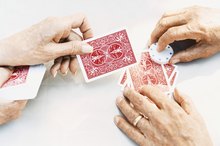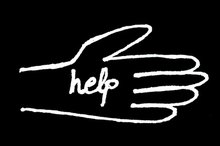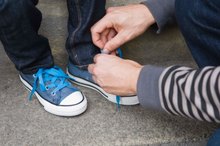Aphasia Speech Therapy Activities
Aphasia is when a person is unable to express or understand language. It can occur because of stroke, tumors, head injuries, and will not become progressively worse unless the underlying reason for the aphasia is progressive. Most cases of aphasia involve anomia, where the person cannot recall the name of objects. Alexia is where the person cannot comprehend written words. Conduction aphasia is when a person cannot repeat words or phrases. Typically, those with aphasia have more than one type.
Expressive Exercises
Use picture cards, either commercial ones or make your own by cutting out pictures from magazines or printing them from the computer, and have the patient name the objects on the cards. Do word games, such as name the opposite, or ask a series of yes or no questions like, "Will glass break?" or "Is fire hot?" Using either verbal clues or picture cards, have the patient group objects into categories. For instance, have pictures of apples, oranges, and bananas. Ask which category they belong to. Using either conversation or pictures, ask comparison questions. Have pictures of a cat and a lion and ask which is bigger. While helping the patient work on naming objects is crucial, don't neglect verbs. To help with that, using verbal prompts or picture cards, ask functional questions. For example, when showing a picture of a broom, ask if you use it to sweep or wash.
- Use picture cards, either commercial ones or make your own by cutting out pictures from magazines or printing them from the computer, and have the patient name the objects on the cards.
- Using either verbal clues or picture cards, have the patient group objects into categories.
Receptive Exercises
Brain Exercises for Broca's Aphasia
Learn More
Picture cards are most helpful in doing exercises at home to help with receptive language difficulties with aphasia 2. For instance, ask the patient to point to the picture that shows a fruit. Or to a picture that shows the sad person. Have the patient indicate which item is used to play music. Ask more involved questions like, what does this person need to go with this item, show a nail, and then pictures of a saw, hammer and level. Work on prepositions by placing objects in different positions. For example have a box, and place one spoon beside it, one behind it and another inside it. Ask the patient to point to the spoon that is behind the box.
- Picture cards are most helpful in doing exercises at home to help with receptive language difficulties with aphasia 2.
- Ask the patient to point to the spoon that is behind the box.
Other Tools
Computers can be helpful in aiding aphasia patients at home. Specific programs are available for aphasia therapy, but many online programs for developing children's speech and vocabulary will be beneficial. Also, picture boards are commercially produced to aid aphasia patients, enabling them to point to different pictures or actions displayed to communicate to others. DVDs are also available to help aphasia patients in their home therapy activities.
- Computers can be helpful in aiding aphasia patients at home.
- Also, picture boards are commercially produced to aid aphasia patients, enabling them to point to different pictures or actions displayed to communicate to others.
Related Articles
References
- Speech-therapy-on-video.com: Improving Expressive Aphasia
- Speech-therapy-on-video.com: Language Exercises to Use at Home
- NIH National Institute of Deafness and Other Communication Disorders (NIDCD). Aphasia. Updated March 6, 2017.
- Child Neurology Foundation. Aphasia.
- Cleveland Clinic. Aphasia. Updated July 9, 2019.
- Cleveland Clinic. Aphasia: Management and treatment. Updated July 9, 2019.
Writer Bio
Katlyn Joy has been a freelance writer since 1982. She graduated from Southern Illinois University-Edwardsville with a master's degree in writing. While in school she served as graduate assistant editor of "Drumvoices Revue" magazine.









